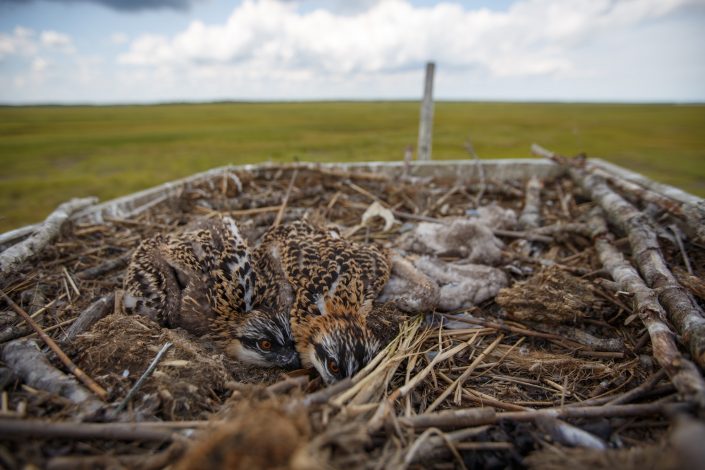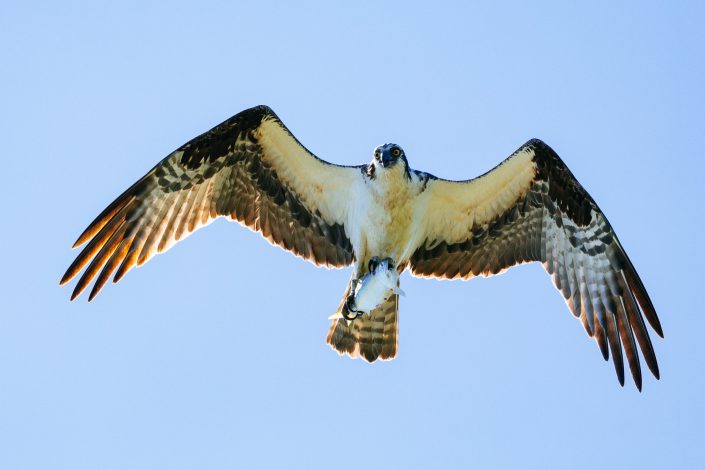Photo from the Field: Mixed Results for Ospreys in 2024
by Ben Wurst, Senior Wildlife Biologist

As juvenile ospreys fledge and adult females begin their southbound migration, work to summarize data from this year is ongoing. So far, it doesn’t look like a terrible year but not a great one either. Food stress (or brood reduction) was still apparent within some coastal nest colonies, despite the lack of severe weather (nor’easters/microbursts, etc) which could affect the ability of adult males to find and catch prey.
In several colonies, around 50% of nests were not active as they were in previous years. As reported earlier this summer, some pairs (like Duke and Daisy at the Barnegat Light Osprey Cam) did not lay eggs. We are still unsure as to why this occurred and are working with other osprey researchers to figure this out. Either way, some nests were still successful to fledge young.

August is an amazing time of year to watch ospreys, especially along Atlantic coastal beaches, where adults forage in the surf zone, specifically at low tide for flounder. On the back bay marshes, you will see young kettling (soaring in circles via thermal updraft) in large groups with adults. These waning days of summer are a magical time of year to get outside and watch wildlife, especially along the coast.
Discover more from Conserve Wildlife Foundation of NJ
Subscribe to get the latest posts sent to your email.